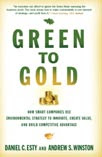 The Princeton Environmental Film Festival is sponsored by the Princeton Public Library. All screenings and talks will be held in the library's Community Room on the first floor. The library is located at 65 Witherspoon Street, Princeton, New Jersey. All screenings and talks are free and open to the public.
The Princeton Environmental Film Festival is sponsored by the Princeton Public Library. All screenings and talks will be held in the library's Community Room on the first floor. The library is located at 65 Witherspoon Street, Princeton, New Jersey. All screenings and talks are free and open to the public.
Opening Night Film - Radiant City 7:00 p.m - Directed by Gary Burns 2006 * Running time: 86 minutes
Gary Burns, Canada's king of surreal comedy, joins journalist Jim Brown on an outing to the burbs. Venturing into territory both familiar and foreign, they turn the documentary genre inside out, crafting a vivid account of life in The Late Suburban Age.
Burns and Brown rummage through a toybox of cultural references, from Jane Jacobs to The Sopranos, to create a provocative reflection on why we live the way we do. Riffing off sitcoms and reality TV, they play fast and loose with a range of cinematic devices to consider what happens when cities get sick and mutate.
By Adam Grybowski
Posted: Tuesday, December 23, 2008 6:41 PM EST
MASSIVE amounts of waste have accrued over time to create five great garbage patches in the world’s oceans. Ian Connacher sailed to the so-called Eastern Garbage Patch in the Pacific Ocean in 2003, sent by a corporate sponsor to gauge the feasibility of collecting some of the garbage and recycling it.
”Most people are fascinated by this floating island of garbage,” he says. “It’s not that. When you get out there, you realize you’re not bringing anything back.”
Although large items of detritus are floating on the ocean’s surface, most of the pollution is invisible. The ocean looks nearly pristine, which is because sunlight and waves break down plastic into smaller and smaller pieces that aren’t readily seen. Capt. Charles Moore of Algalita Marine Research Facility, who calls the ocean a “plastic soup,” measured a sample of ocean water with a 10-to-1 ratio of plastic to plankton.
Marine life can mistake plastic as food, and when fish eat it, the material begins to work its way up the food chain. Enhancing this menace is the fact that chemicals are attracted to plastic.
”It wasn’t a happy story,” says Mr. Connacher, who at the time was a segment producer for Discovery Canada’s Daily Planet. “I wanted to know how to fix it.”
He pitched them an idea for a documentary on plastic. “I knew plastic was compelling enough to do a film on,” he says. “We touch it everyday and hardly think about it.” Discovery said no. How about a year off so he could pursue the idea on his own? When they said no again, Mr. Connacher quit.
That decision propelled him on a three-year odyssey in pursuit of plastic’s story. He visited five continents and 12 countries, conducting nearly 50 interviews in laboratories, factories and landfills. He shot more than 300 hours of film that became an 85-minute documentary, Addicted to Plastic. On Jan. 7, when the film makes its U.S. premiere at the Princeton Environmental Film Festival, Mr. Connacher will be on hand to answer questions.
The third annual festival, running Jan. 2 to 11, is comprised of documentary films on a number of environmental issues, including waste (Trashed), energy (Burning the Future: Coal in America) and green building (The Greening of Southie). A host of talks and panel discussions, featuring a bevy of the industry’s movers and shakers, complement the films.
”Film is a medium for people to become more aware, and we hope that awareness will be coupled with action,” says Susan Conlon, the festival coordinator.
”I wouldn’t have made this (film) if I didn’t think it would help,” Mr. Connacher says. “It’s up to the individual to take responsibility, and I hope this gives them a few tools. “
On Jan. 9, as a model for action, Shana Weber, of the Princeton University office of sustainability, will present student-produced short films and podcasts on issues such as green roofs and food waste.
Ms. Weber cut her teeth in radio production as a graduate student at Indiana University, where she earned her doctorate in environmental science. Producing pieces for a program on public radio, she had complete freedom to translate the complicated issues she was learning about for a general audience.
”I fell in love with developing the tools to communicate really difficult environmental issues in a way that’s fun,” she says. “Sometimes when you have a technical or research-heavy topic, it’s not accessible to people.
”When I came here (to Princeton University in 2006) I wanted to take it to the next level,” she adds. The Student Environmental Communication Network is a training and internship program that teaches students how to tell stories using audio and video technology. Ms. Weber’s vision is to create a model for a national network of students who produce stories on sustainability from their perspective.
”There has been a great demand to hear youth voices on a number of topics,” she says. “There’s always been a small cohort of students interested in this stuff. It has reached a new level of importance for more students,” and not necessarily just the hardcore environmentalists.
The traces the surge of awareness and the desire to participate through a conflux of events. Two years ago An Inconvenient Truth hit theaters. The film won an Oscar and Al Gore a Nobel Prize. Then Hurricane Katrina presented a real-life version of the extreme weather Gore forecasted. Finally, the scientific community’s reports on the veracity of global warming “became more statistically strong,” Ms. Weber says.
For Mr. Connacher, awareness and action were one and the same. “I was pretty asleep myself,” he says of his pre-filming attitude toward plastic. “I never realized how much plastic was around us. I never realized how much did not get recycled. And I didn’t know about the chemicals.”
He is referring to the controversy over the toxicity of certain plastics, which he examines in his film. He interviews scientists who, though they have yet to find conclusive evidence, have diminished their personal use of plastic due to health concerns. Mr. Connacher has followed step, tossing his Teflon pans, among other measures.
He concedes he couldn’t have made his movie without plastic. The material is useful, and its disappearance would considerably alter everyday life. “I’m not out to demonize the material,” Mr. Connacher says. “This movie is to start the debate. There are no easy solutions or magic bullets.”
Indeed, plastic alternatives presented in the film, such as bioplastic made from vegetables, have their own problems. When farmland is used to grow crops for bioplastic, less food is available for a hungry world.
Among discussion of bioplastic and green roofs, there is danger of losing sight of initiatives that are less visible but equally important. “In this business we call it ‘sexy tech,’” Ms. Weber says of headline grabbing technology. “It’s visible, it’s fun to talk about, it’s big and everyone thinks it has a huge impact. One of the things I love to emphasize is that so many things behind the scenes that are not sexy are absolutely essential pieces of the puzzle.”
For example, miles of steam pipe run underneath Princeton’s campus. In sections where pressure switches from high to low, energy is lost. Engineers have installed microturbines to capture that energy and produce electricity. One microturbine powers six dorms. “And no one will ever see that,” Ms. Weber says. She calls it “The gritty underbelly of sustainability,” adding, “That’s where the gold is.”
The Princeton Environmental Film Festival will be held at the Princeton Public Library, 65 Witherspoon St., Princeton, Jan. 2-11. Communicating Sustainability: Video and Podcast Explorations by Princeton University Students will be presented Jan. 9, 3:30 p.m. Addicted to Plastic will be screened Jan. 9, 7 p.m. All screenings, talks and panel discussions are free. (609) 924-9529; http://www.princeton.lib.nj.us/peff




































No comments:
Post a Comment